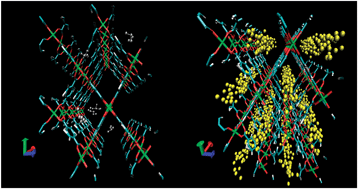Low-coverage adsorption properties of the metal–organic framework MIL-47 studied by pulse chromatography and Monte Carlo simulations
Abstract
Low-coverage

* Corresponding authors
a
Department of Chemical Engineering, Vrije Universiteit Brussel, Brussels, Belgium
E-mail:
joeri.denayer@vub.ac.be
Tel: + 32 2 629 17 98
b Department of Physical, Chemical, and Natural Systems, University Pablo de Olavide, Ctra. Utrera km. 1, Seville, Spain
c Centrum voor oppervlaktechemie en Katalyse, Katholieke Universiteit Leuven, Leuven, Belgium
Low-coverage

 Please wait while we load your content...
Something went wrong. Try again?
Please wait while we load your content...
Something went wrong. Try again?
V. Finsy, S. Calero, E. García-Pérez, P. J. Merkling, G. Vedts, D. E. De Vos, G. V. Baron and J. F. M. Denayer, Phys. Chem. Chem. Phys., 2009, 11, 3515 DOI: 10.1039/B822247A
To request permission to reproduce material from this article, please go to the Copyright Clearance Center request page.
If you are an author contributing to an RSC publication, you do not need to request permission provided correct acknowledgement is given.
If you are the author of this article, you do not need to request permission to reproduce figures and diagrams provided correct acknowledgement is given. If you want to reproduce the whole article in a third-party publication (excluding your thesis/dissertation for which permission is not required) please go to the Copyright Clearance Center request page.
Read more about how to correctly acknowledge RSC content.
 Fetching data from CrossRef.
Fetching data from CrossRef.
This may take some time to load.
Loading related content
